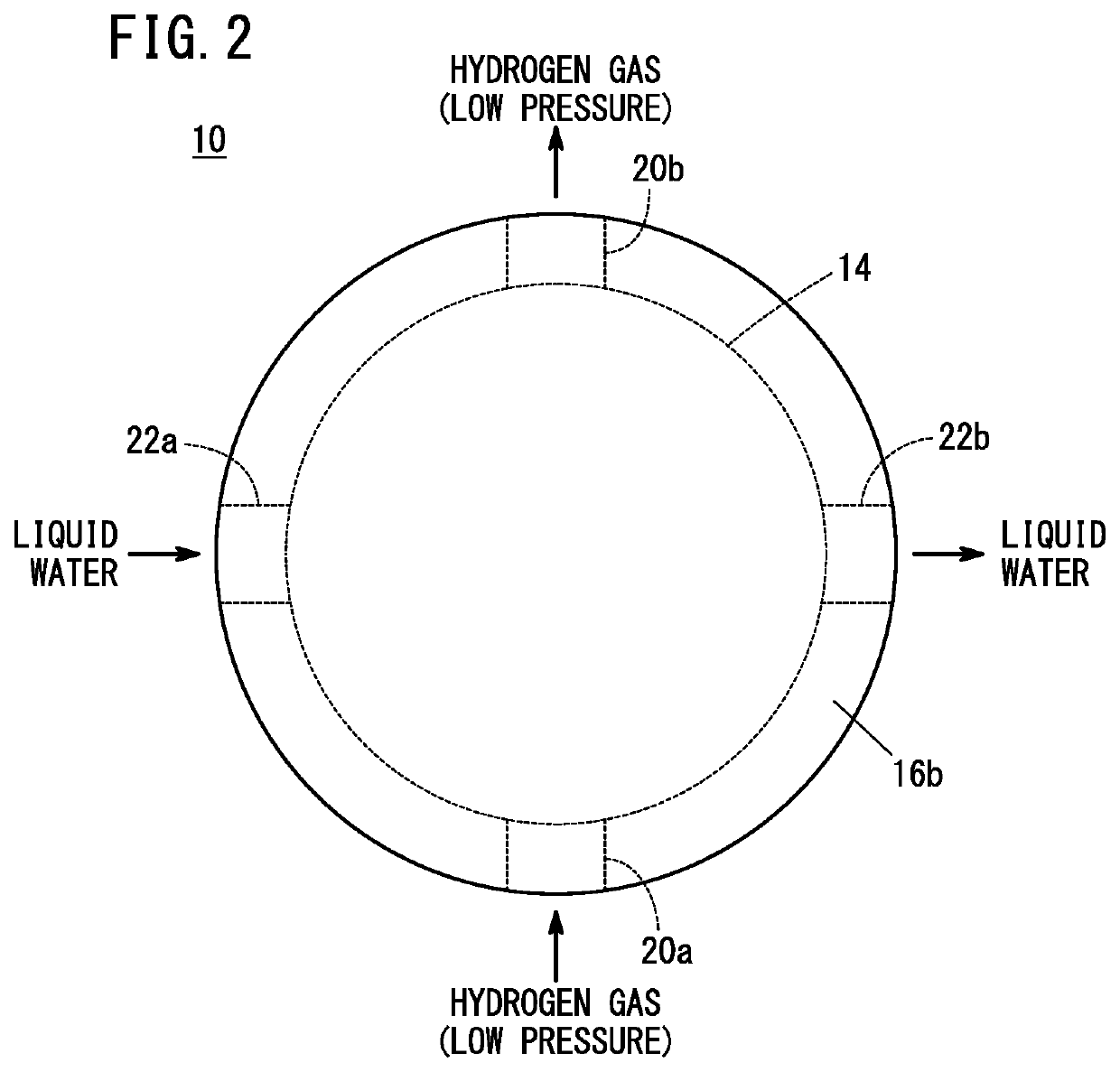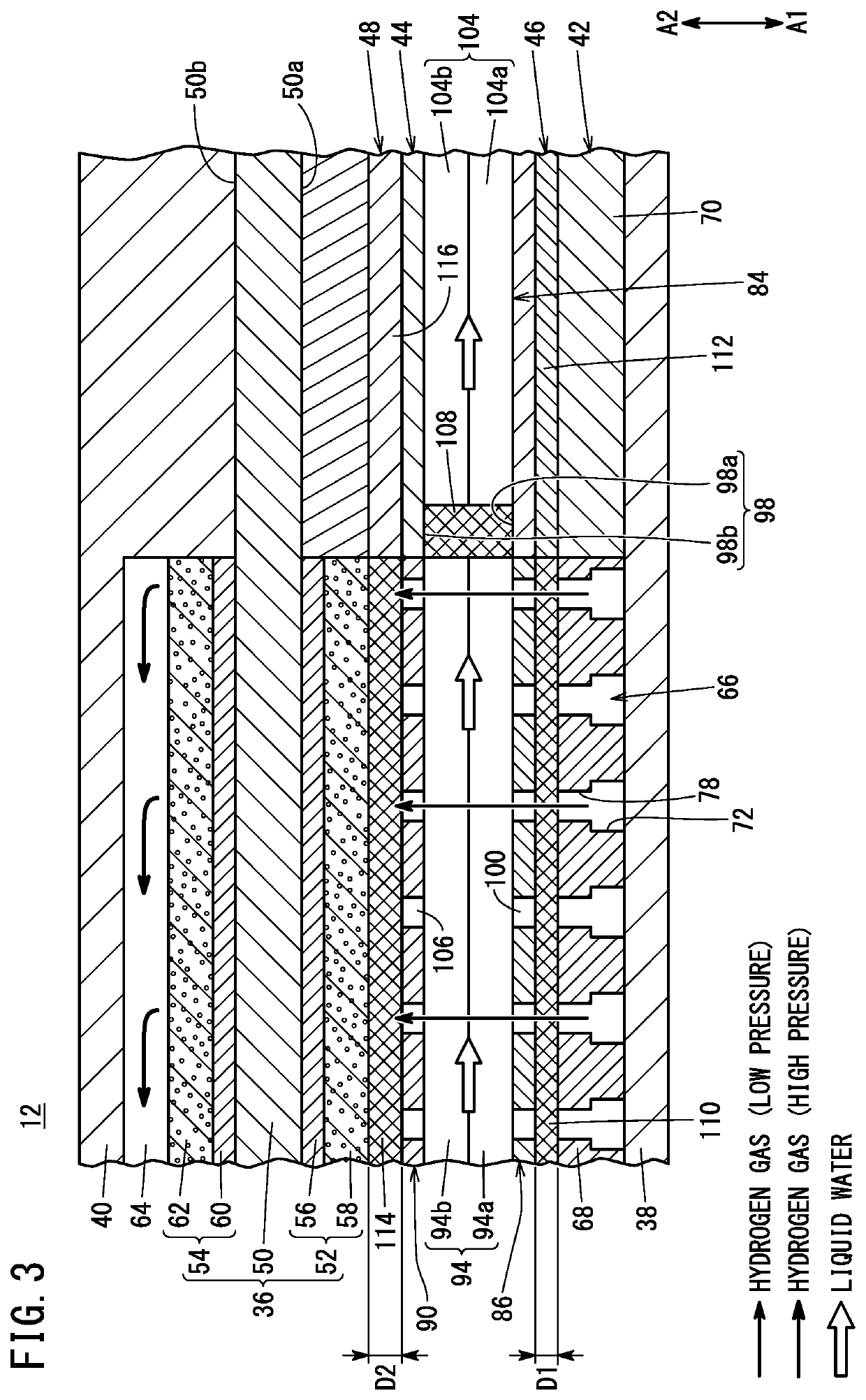Electrochemical hydrogen compressor
a hydrogen compressor and electrochemical technology, applied in the field of electrochemical hydrogen compressors, can solve the problems of excessively high the tendency of the electrolyte membrane to dry, and achieve the effect of preventing the temperature of the electrolyte membrane from becoming excessively high, preventing the electrolyte membrane from drying, and increasing the amount of evaporation (water vapor)
- Summary
- Abstract
- Description
- Claims
- Application Information
AI Technical Summary
Benefits of technology
Problems solved by technology
Method used
Image
Examples
Embodiment Construction
[0015]As shown in FIGS. 1 and 2, an electrochemical hydrogen compressor 10 according to an embodiment of the present invention is a booster that electrochemically boosts low-pressure hydrogen gas supplied from a hydrogen tank or the like (not shown) via an external pipe to high-pressure hydrogen gas.
[0016]An electrochemical hydrogen compressor 10 includes a cell stack 14, a first end plate 16a, and a second end plate 16b. In the cell stack 14, a plurality of electrochemical cells 12 are stacked in the thickness direction. The first end plate 16a is located at one end of the cell stack 14. The second end plate 16b is located at the other end of the cell stack 14. The first end plate 16a and the second end plate 16b are fastened by a plurality of bolts (not shown). Thus, a clamping load is applied to the cell stack 14 by the first end plate 16a and the second end plate 16b. A power supply device (not shown) for supplying electricity to each electrochemical cell 12 is connected to the ...
PUM
| Property | Measurement | Unit |
|---|---|---|
| pressure | aaaaa | aaaaa |
| water repellency | aaaaa | aaaaa |
| thickness | aaaaa | aaaaa |
Abstract
Description
Claims
Application Information
 Login to View More
Login to View More - R&D
- Intellectual Property
- Life Sciences
- Materials
- Tech Scout
- Unparalleled Data Quality
- Higher Quality Content
- 60% Fewer Hallucinations
Browse by: Latest US Patents, China's latest patents, Technical Efficacy Thesaurus, Application Domain, Technology Topic, Popular Technical Reports.
© 2025 PatSnap. All rights reserved.Legal|Privacy policy|Modern Slavery Act Transparency Statement|Sitemap|About US| Contact US: help@patsnap.com



